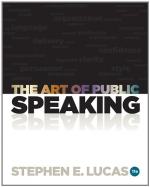What is it, and what is it not?
What is it like, and unlike?
What are its causes, and effects?
How shall it be divided?
With what subjects is it correlated?
What experiences does it recall?
What examples illustrate it?
QUESTIONS AND EXERCISES
1. What would be the effect of adhering to any one of the forms of discourse in a public address?
2. Have you ever heard such an address?
3. Invent a series of examples illustrative of the distinctions made on pages 232 and 233.
4. Make a list of ten subjects that might be treated largely, if not entirely, by exposition.
5. Name the six standards by which expository writing should be tried.
6. Define any one of the following: (a) storage battery; (b) “a free hand;” (c) sail boat; (d) “The Big Stick;” (e) nonsense; (f) “a good sport;” (g) short-story; (h) novel; (i) newspaper; (j) politician; (k) jealousy; (l) truth; (m) matinee girl; (n) college honor system; (o) modish; (p) slum; (q) settlement work; (r) forensic.
7. Amplify the definition by antithesis.
8. Invent two examples to illustrate the definition (question 6).
9. Invent two analogies for the same subject (question 6).
10. Make a short speech based on one of the following: (a) wages and salary; (b) master and man; (c) war and peace; (d) home and the boarding house; (e) struggle and victory; (f) ignorance and ambition.
11. Make a ten-minute speech on any of the topics named in question 6, using all the methods of exposition already named.
12. Explain what is meant by discarding topics collateral and subordinate to a subject.
13. Rewrite the jury-speech on page 224.
14. Define correlation.
15. Write an example of “classification,” on any political, social, economic, or moral issue of the day.
16. Make a brief analytical statement of Henry W. Grady’s “The Race Problem,” page 36.
17. By what analytical principle did you proceed? (See page 225.)
18. Write a short, carefully generalized speech from a large amount of data on one of the following subjects: (a) The servant girl problem; (b) cats; (c) the baseball craze; (d) reform administrations; (e) sewing societies; (f) coeducation; (g) the traveling salesman.
19. Observe this passage from Newton’s “Effective Speaking:”




